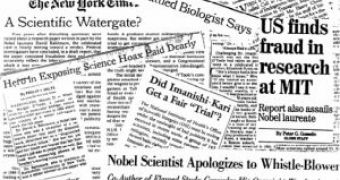After the recent scandal of the South Korean cloning expert Hwang Woo-suk who faked the results of his work, one can wonder how much of the scientific papers contain fraudulent data. Given that much of the scientific data is contained in graphs and pictures, faking scientific data often resorts to altering a digital photo.
Since 2002 the Journal of Cell Biology is using digital photo testing to halt manipulation of data by authors. Michael Rossner of Rockefeller University, the executive editor of the Journal, told The New York Times that, since 2002, 25 percent of all accepted manuscripts had contained one or more manipulated illustrations, violating the journal's guidelines. However, the editor of the journal, Ira Mellman of Yale, said most cases were resolved when the authors provided originals. "In 1 percent of the cases we find authors have engaged in fraud," he said.
The journal's guidelines require that nothing should be done to any part of a submitted illustration that didn't affect all other parts equally. The editors now check all submitted illustrations through Photoshop to see if new features have been added.
The journal Science, where Hwang Woo-suk published his work, has now adopted the Journal of Cell Biology's guidelines. Eventually, probably all science journals will adopt similar measures.
In the aftermath of Hwang Woo-suk scandal, Laurie Zoloth, a specialist in bioethics for Northwestern University, said: "Without trust, we just cannot imagine science. This is utterly unacceptable." Nevertheless, it seems that science is adapting and goes on.

 14 DAY TRIAL //
14 DAY TRIAL //